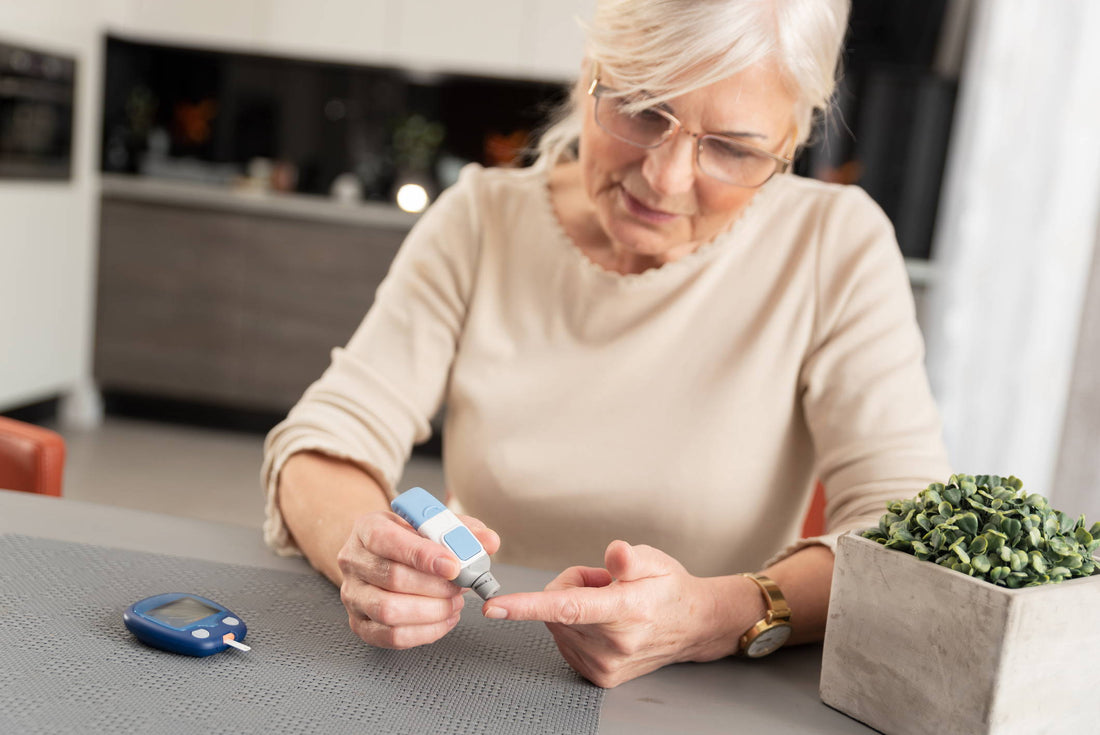Diabetes is a chronic health condition that affects a surprising amount of people. The most common type of diabetes is Type 2 diabetes, where your body becomes resistant to insulin over time. The other type of diabetes is Type 1, an autoimmune condition where your pancreas cannot produce enough insulin. Both of these conditions can have severe health consequences. However, what many people don’t know is diabetes can also cause hair loss. Here is what you need to know about diabetes and hair loss and how to regrow your hair if you have this condition.
Diabetes in a Nutshell
We have already laid out two types of diabetes: type 1 and type 2. Often referred to as juvenile diabetes because it is frequently first identified in childhood (although not always), type 1 diabetes is due to an autoimmune process. In type 1 diabetes, your immune system attacks the beta cells in your pancreas, which produce insulin. When these cells are destroyed, you cannot make insulin, resulting in severe and life-threatening consequences.
Insulin is a hormone that helps regulate the amount of sugar, or glucose, in your blood. When blood sugar is high, such as after eating a meal, insulin helps your cells take in glucose to use for energy. When insulin is not available, your cells can become starved for fuel.
Unlike type 1 diabetes, type 2 diabetes is often acquired as you get older and is not caused by autoimmune processes. Rather, this type of diabetes may stem from your environment and genetics. In type 2 diabetes, your body becomes resistant to insulin, meaning that it still produces it but cannot effectively use it. Insulin resistance is often associated with people who are inactive and overweight.
In both types of diabetes, the lack of or ineffectiveness of insulin causes sugar to accumulate in your blood. Chronically high blood sugar levels can lead to organ and tissue damage. Some of the most common organs affected include your eyes, kidneys, and nerves. High blood sugar also damages your blood vessels, making it harder for tissues to receive oxygen and nutrient-rich blood.
How Diabetes Affects the Hair Growth Cycle
As you may already imagine, vessel damage also inhibits blood supply from reaching your scalp and hair follicles. For this reason, diabetes compromises your normal hair growth cycle. Diabetes slows the hair growth process, leaving more time between when an old strand falls out, and a new one grows. Additionally, it can also speed up the rate at which you shed hair.
Hair loss is not only concentrated on your head. People with diabetes also lose hair on the rest of their bodies. Indeed, hairless legs are often a sign of a diabetic process.
Diabetes and Alopecia Areata
Because type 1 diabetes is an autoimmune disorder, people with this condition are also predisposed to having other autoimmune diseases. Known as polyautoimmunity, multiple autoimmune disorders often occur in a single person. Alopecia areata is an autoimmune condition where your immune system attacks your hair follicles. As a result, people with this condition have bald patches that appear all over their bodies, including their heads.
Alopecia areata is extremely difficult to treat and can be even more complicated in the presence of diabetes. Additionally, most autoimmune conditions have hair loss as a symptom, meaning that people with type 1 diabetes who have alopecia areata may also have another autoimmune disorder like Hashimoto’s thyroiditis, which further worsens hair loss.
Where to Start If You Have Diabetes and Hair Loss
Start by talking with your doctor about your symptoms. If you have not received a diagnosis for diabetes or are not controlled on your medication, you will need a blood test to stabilize your blood sugar levels. While hair loss is unfortunate and can take away your confidence, you can live without your hair. But you can’t live without organs commonly affected by uncontrolled diabetes, such as loss of kidney function and heart problems. Seeking treatment for diabetes goes beyond your hair.
Getting your blood sugar under control requires taking medication as directed and making dietary and lifestyle changes to manage your condition. Once you have these things under control, you can start to focus on your hair.
Regrowing Your Hair
Consistent blood sugar control is the first step in helping your hair regrow. Indeed, people often find their hair starts to grow once they take their medications and their blood sugar stays within an acceptable range. To encourage hair regrowth, there are several steps you should take.
Hair Regrowth Treatments
Start by using a topical hair regrowth solution like Nanoxidil 5% to stimulate hair regrowth. Nanoxidil is a powerful alternative to minoxidil and has no known side effects. Several clinical studies show that Nanoxidil:
- Opens ion channels within cells to bring oxygen-rich blood into follicles
- Prevents follicular fibrosis
- Suppresses dihydrotestosterone (DHT)
- Prolongs the growing phase of follicles
- Blocks chronic inflammation (a key component of any disease, including diabetes)
- Suppresses protein-kinase-C, and
- Increases the expression of vascular endothelial growth factor.
Take Hair Supplements
Your hair needs proper nutrients, just like every other part of your body. Taking a supplement like the REVITA Nutraceutical Tablets for Hair Growth Support can ensure you are getting all of your nutrients. This supplement can be especially useful in people with diabetes who need to count carbohydrates, which may limit their ability to obtain certain nutrients.
Use Supportive Shampooing Products
Certain shampoos also contain the right ingredients to support hair regrowth. Consider using the REVITA High-Performance Hair Stimulating Shampoo to counter hair loss. The unique hair stimulating compounds in this formulation support faster hair growth and suppress factors that inhibit growth, such as DHT and fungus.

